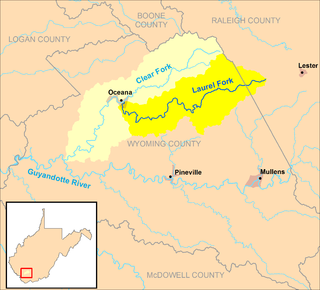An administrative law judge (ALJ) in the United States is a judge and trier of fact who both presides over trials and adjudicates claims or disputes involving administrative law. ALJs can administer oaths, take testimony, rule on questions of evidence, and make factual and legal determinations.

The Chesapeake Bay Program is the regional partnership that directs and conducts the restoration of the Chesapeake Bay in the United States. As a partnership, the Chesapeake Bay Program brings together members of various state, federal, academic and local watershed organizations to build and adopt policies that support Chesapeake Bay restoration. By combining the resources and unique strengths of each individual organization, the Chesapeake Bay Program is able to follow a unified plan for restoration. The program office is located in Annapolis, Maryland.

The New Jersey Department of Environmental Protection (NJDEP) is a government agency in the U.S. state of New Jersey that is responsible for managing the state's natural resources and addressing issues related to pollution. NJDEP now has a staff of approximately 2,850.

Stonecoal Creek is a tributary of the West Fork River, 12.8 miles (20.6 km) long, in north-central West Virginia in the United States. Via the West Fork, Monongahela and Ohio Rivers, it is part of the watershed of the Mississippi River, draining an area of 41 square miles (110 km2) on the unglaciated portion of the Allegheny Plateau. The stream is believed to have been named in the late 1760s by a group of explorers and settlers, who found coal in nearby hills and mixed with pebbles in the stream.

A conservation officer is a law enforcement officer who protects wildlife and the environment. A conservation officer may also be referred to as an environmental technician/technologist, game warden, park ranger, forest watcher, forest guard, forester, gamekeeper, investigator, wildernessofficer, wildlifeofficer, or wildlife trooper.

Burches Run Wildlife Management Area, formerly Burches Run Lake WMA, is located on 55 acres (22 ha) near Wheeling in Marshall County, West Virginia. Until 2005 the wildlife management area contained a lake impounded by a dam at risk of failure. The name change occurred after the dam was removed. The terrain climbs gently above Burches Run and is covered by a mature oak-hickory second-growth forest.
West Virginia Division of Forestry is a government agency of the U.S. state of West Virginia. It is a division of the West Virginia Department of Commerce. The West Virginia Division of Forestry is responsible for regulating and maintaining West Virginia's state forests and other state-controlled forest areas.
The Virginia Department of Agriculture and Consumer Services (VDACS) is an agency of the Commonwealth of Virginia that is responsible for promoting the economic growth and development of Virginia's agricultural sector. It also provides environmental protection services and consumer protection programs.
The Henry Fork is a tributary of the West Fork Little Kanawha River, 21.8 miles (35.1 km) long, in west-central West Virginia in the United States. Via the West Fork and the Little Kanawha and Ohio rivers, it is part of the watershed of the Mississippi River, draining an area of 91 square miles (240 km2) in a rural region on the unglaciated portion of the Allegheny Plateau.

Buffalo Creek is a tributary of the Guyandotte River, 18.8 miles (30.3 km) long, in southern West Virginia in the United States. Via the Guyandotte and Ohio rivers, it is part of the watershed of the Mississippi River, draining an area of 45 square miles (120 km2) in the Logan Coalfield. The creek was the site of the Buffalo Creek Flood in 1972.

Copperas Mine Fork is a tributary of Island Creek, 9.3 miles (15.0 km) long, in southern West Virginia in the United States. Via Island Creek and the Guyandotte and Ohio rivers, it is part of the watershed of the Mississippi River, draining an area of 45.4 square miles (118 km2) in a rural area on the unglaciated portion of the Allegheny Plateau, in the Logan Coalfield. The Copperas Mine Fork's entire course and drainage area are in Logan County.

The Clear Fork is a tributary of the Guyandotte River, 29 miles (47 km) long, in southern West Virginia in the United States. Via the Guyandotte and Ohio rivers, it is part of the watershed of the Mississippi River, draining an area of 129 square miles (330 km2) in a rural area on the unglaciated portion of the Allegheny Plateau. The Clear Fork flows for its entire length in Wyoming County; its tributary the Laurel Fork also drains a small area of western Raleigh County.

The Laurel Fork is a tributary of the Clear Fork, 23.5 miles (37.8 km) long, in southern West Virginia in the United States. Via the Clear Fork and the Guyandotte and Ohio rivers, it is part of the watershed of the Mississippi River, draining an area of 56.4 square miles (146 km2) in a rural area on the unglaciated portion of the Allegheny Plateau.

The Western Allegheny Plateau is an ecoregion of the Temperate broadleaf and mixed forests Biome, located on the western Allegheny Plateau and in the Appalachia region of the Eastern United States.









